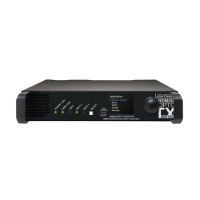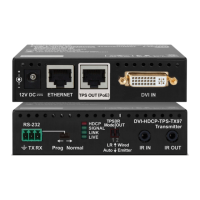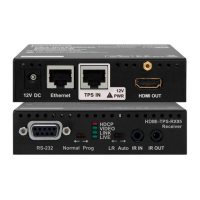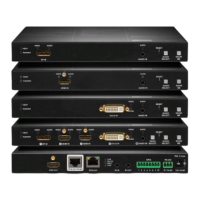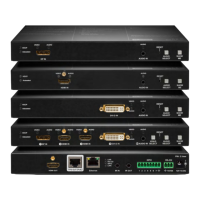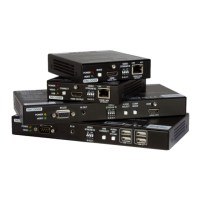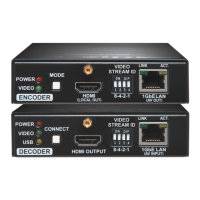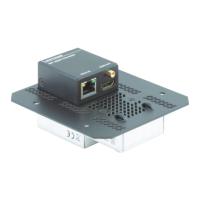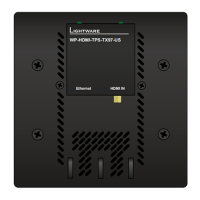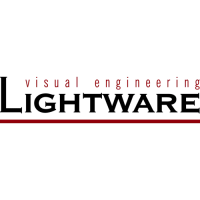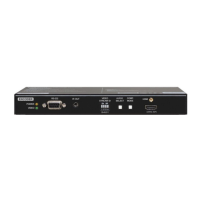Why no LEDs are light on Lightware Extender?
- KKayla Murphy DDSSep 15, 2025
If no LEDs are lit, the dark mode may be enabled. Disable the dark mode to restore LED functionality.
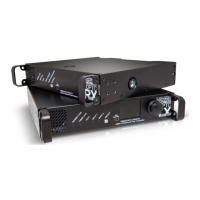
Why no LEDs are light on Lightware Extender?
If no LEDs are lit, the dark mode may be enabled. Disable the dark mode to restore LED functionality.
Why is there no picture on the Lightware HDMI20-OPTC-TX220-Pro video output?
Several factors might be the cause of a missing picture on the video output: * The extenders or other devices may not be powered properly. Check that all devices are correctly powered, and try unplugging and reconnecting them. * There may be a cable connection problem. Ensure all connectors fit well, especially given the high data rates. If your source or display has multiple connectors, verify the correct port is selected. * The cable quality might be insufficient. High data rates require high-quality cables; using OM3 or OM4 fiber cables is recommended. * The endface surface of the fiber optical cable may be contaminated. Use special fiber optical cable cleaning equipment to clean it carefully. * The display may not support the sent video format. Try emulating your display dev...
| Category | Extender |
|---|---|
| Model | HDMI20-OPTC-TX220-Pro |
| Manufacturer | Lightware |
| Input Ports | 1 x HDMI |
| Max Resolution | 4K@60Hz |
| Fiber Optic | Yes |
| Operating Temperature | 0°C to +50°C |
| Storage Temperature | -20°C to +60°C |
| Signal Type | HDMI |
| HDCP Support | HDCP 2.2 |
| Power Supply | 5V DC |
Safety features and power connection requirements for Class I apparatus.
Details the features and benefits of the HDMI20-OPTC series extenders.
Covers 4K UHD, 700m transmission, 18 Gbps bandwidth, and 4:2:0 conversion.
Includes HDMI splitting, local output, graphic display, dark mode, and event manager.
Explains various mounting methods including rack and truss installation.
Provides a step-by-step guide for connecting the device to sources and displays.
Details the controls and indicators on the front panel of the transmitter and receiver.
Describes Transparent, Split, and Downsample conversion modes for video output.
Instructions for powering on the device and post-self-test behavior.
Explains the function of front panel buttons and status LEDs for transmitter and receiver.
Explains advanced EDID management including viewing, switching, and saving EDIDs.
Instructions for installing and upgrading the Lightware Device Controller software.
How to start and connect the LDC software to a device using IP address.
Steps to connect the device to the computer via USB, RS-232, or Ethernet using LDC.
Explains the EDID memory structure and types of EDID emulation.
Covers changing emulated EDIDs, learning EDIDs, and exporting EDIDs.
Explains the interface and components of the Event editor for creating conditions and actions.
Guides on creating or modifying events using wizard, advanced, or link modes.
Configures IP address, DHCP settings, and network parameters.
Introduces the LW3 protocol, its structure, and application.
Outlines general rules and syntax for LW3 protocol commands.
Command to restore the device to its factory default configuration.
Command to manage HDCP version settings for input ports.
Commands for sending ASCII, text, and binary messages via RS-232, TCP, and UDP ports.
Command to switch or emulate an EDID to a specific input port.
Command to copy EDIDs from factory, user, or dynamic sources to user memory.
Addresses problems related to video signal transmission, cable issues, and format compatibility.
Troubleshooting steps for when the HDMI output has no audio signal.
Addresses problems with RS-232 signal transmission and connected devices.
Troubleshooting steps for No LAN connection, IP conflicts, and DHCP issues.
Explains the role of EDID, its communication, and common problems.
Details Lightware's advanced EDID management features for system integration.
Explains how HDCP affects content and disabling unnecessary encryption.
Explains signal integrity issues like intra-pair/inter-pair skew and jitter.
Lists detailed technical specifications of the device, including compliance, power, and enclosure details.
